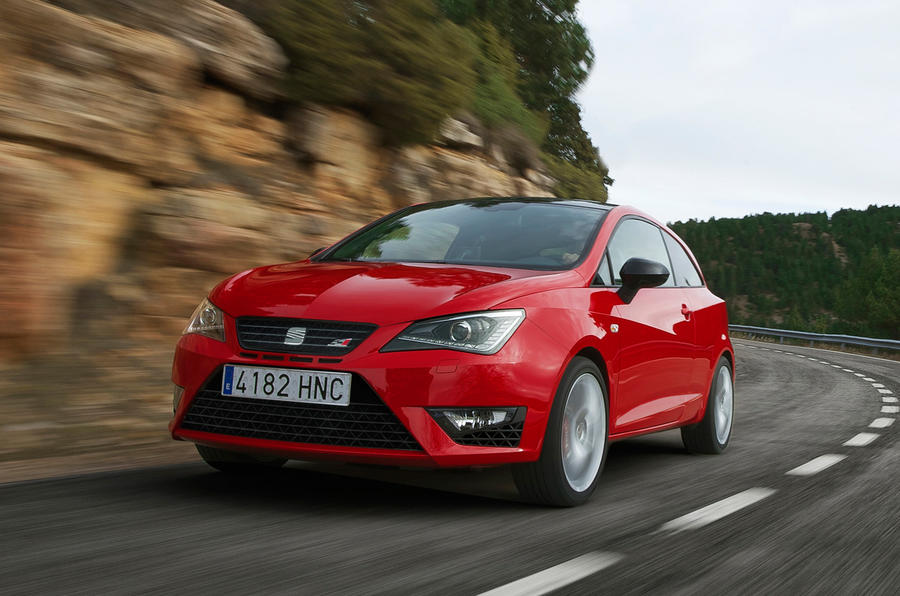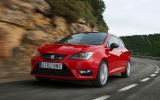The pre-facelift Ibiza had an impressively tractable twin-charged 1.4 engine, and the tweaks that Seat’s engineers have made improves this further. There’s urge from 2000rpm round to the redline. Coupled with a good application of the VW Group’s 7-speed DSG gearbox, there’s always plenty in the tank for swift overtaking manoeuvres.
In slow-speed urban environments, the Cupra is surprisingly smooth. The gearchanges are as quick as ever, but the DSG's ability to auto-shift even when in manual modes means that occasionally a tug of the downshift paddle means you’ve swapped two cogs instead of one.
There’s a disconnected feeling to the steering you wouldn’t find in a Clio RenaultSport, and it is enough to put most of the car’s improvements in the shade. The steering lacks ultimate precision and there’s an inconsistent feeling as you wind lock on and off.
Better are the changes made to the rear suspension set-up, which gets a new axle bearing configuration for a more gently-sprung feeling. It is claimed to make it more forgiving on longer runs, and on smooth Spanish roads, it appears to be the case.
What is certain is that the Cupra has a tightly controlled front end during hard cornering. The XDS electronic diff, which brakes the inside wheel, reduces understeer. Changes to the suspension and steering mean you can feel the system working more than ever. The effect is profound, even if the ESP is ever-so-slightly too eager to kick in.
The available test cars featured an optional AP Racing brake set-up, distinguished by bulging red ‘Seat Sport’ branded callipers. Without the ability to test them against the standard set-up it’s hard to say if they’re worth the £1000 outlay. In isolation, the four-piston callipers and 312mm discs (compared to 288mm as standard) offer fairly ferocious stopping power and a decent, positive pedal feel.
The Cupra receives the same basic visual upgrades as the standard car, although the requisite number of go-faster styling upgrades are applied inside and out. The car’s centrally mounted exhaust, front and rear bumpers, alloy wheels and sports seats are all specific to the Cupra. Happily, Seat’s designers have spared the Cupra the type of thick-rimmed steering wheel that appears in some of the Ibiza’s rivals.


























Join the debate
Add your comment
Where did the missed gear go?
Yes, that is precisley one of the gripes I do have about DSG.
The scenario is: it is in manual, you are going downhill, braking firmly and want to turn left, and you want 3rd gear for the corner/junction. You know it is currently in gear 5, you give two taps to knock down to 3rd, but in those fleeting moments, the gearbox brain has already decided it wanted to be in 4th (rather than 5th) so your two taps take you down to 2nd. Some better anticipation usually gets round this foible, but that's not quite the point of course, you cannot put the lever in a slot and know come what may what gear you will be in. For an enthusiast, that could be a bit of a turn off. Sometimes.
hi........................
hi........................
buddy i am new user for this site.
but i know that this website is
very useful for the any type of query.
so, you get information about that topic.
..........................................
...........................................
[url=http://www.alladsclassified.com] Top Ten Classified [/url]
Hmmmm?, it's ok, but......
When they arrive here,will they switch the buttons around to suit us Brits?,because as just now, the rear demist and the TWO! door switches are on the passenger side of the gear stick which means while driving you either fumble for said switches,or, take your eyes of the road which isn't handy.